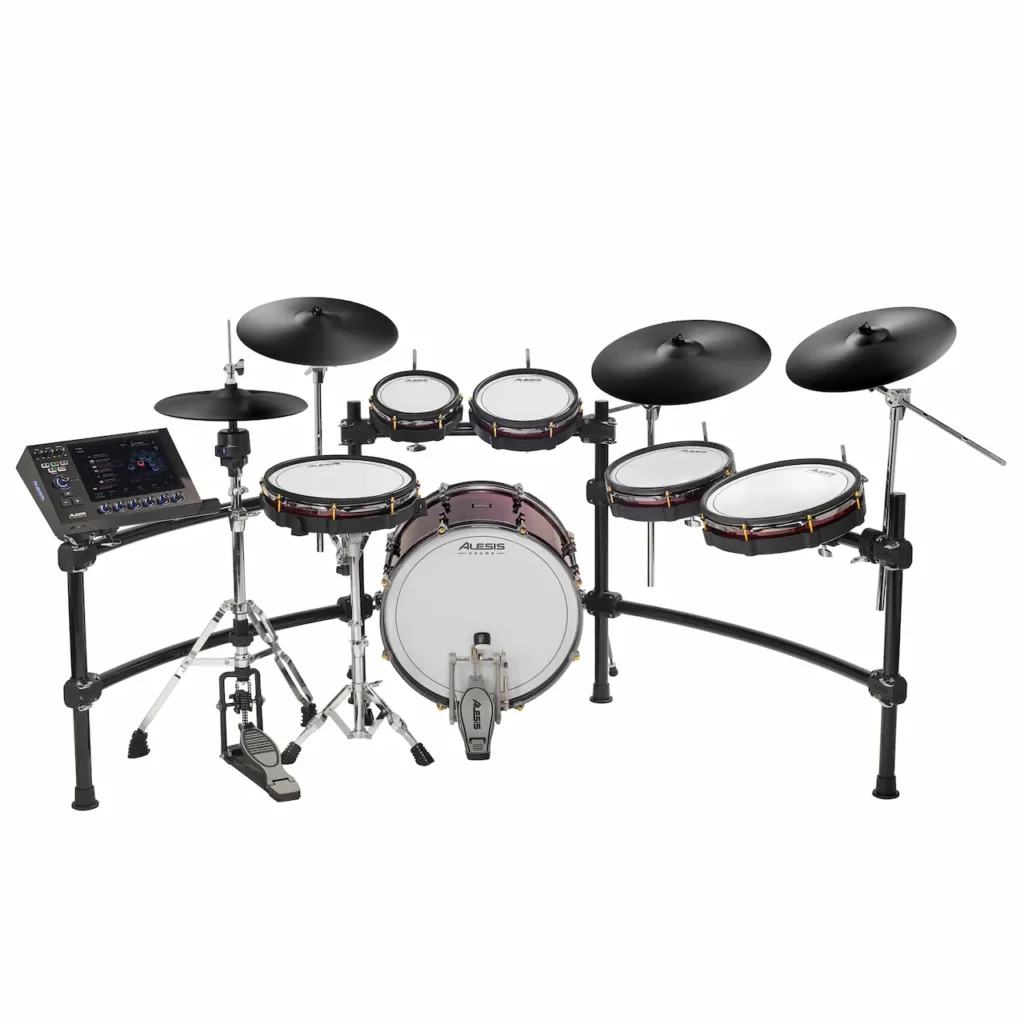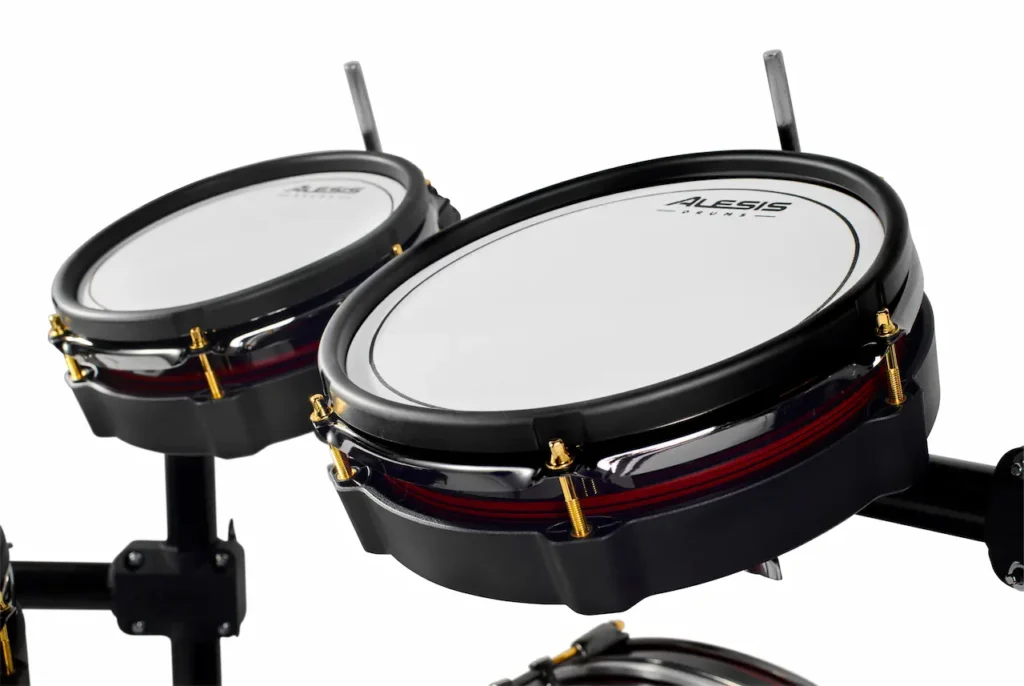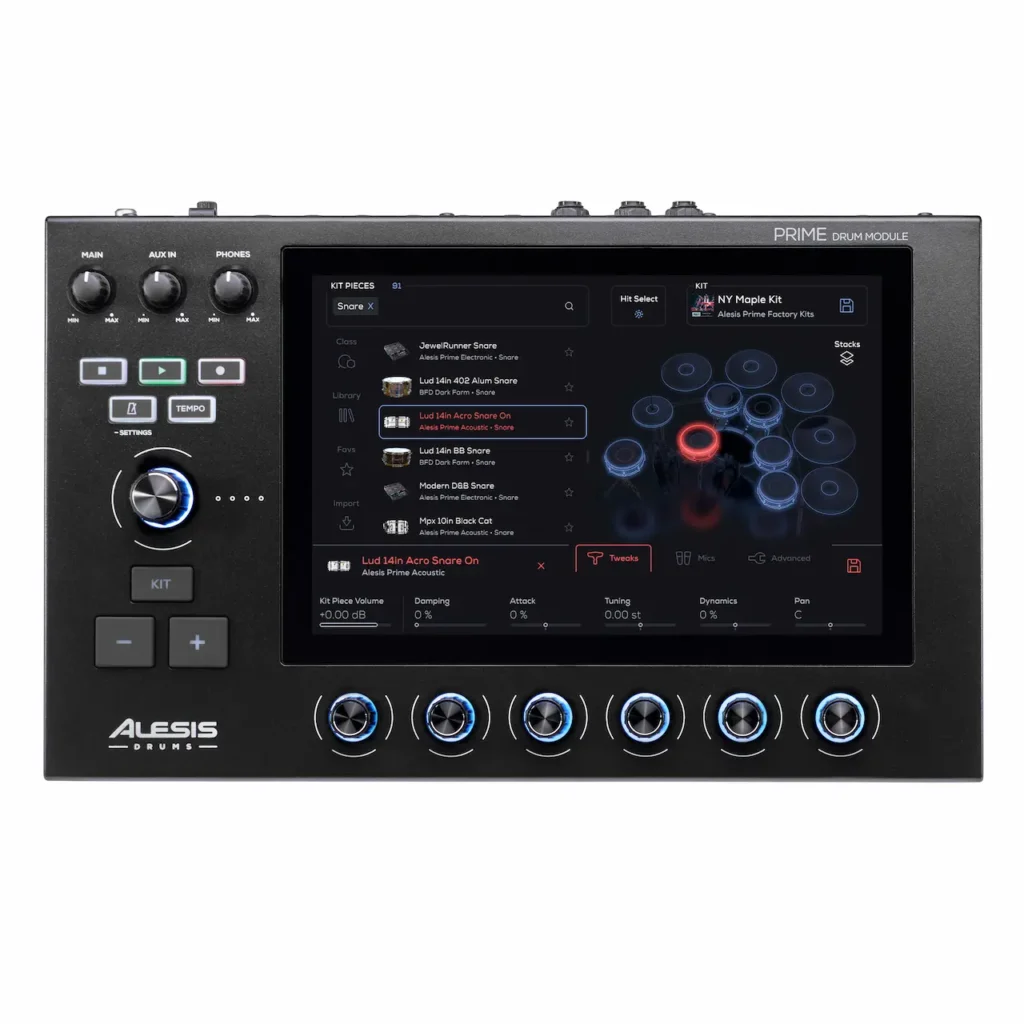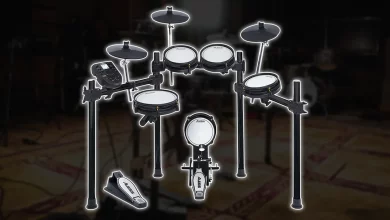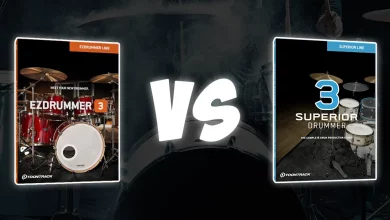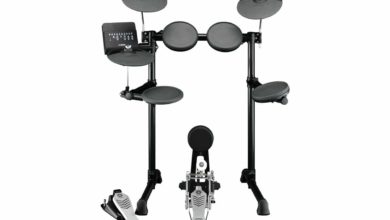We may earn a commission from the affiliate links on this site. Learn more›
Alesis Strata Prime Review: What Is It?
The market for high-end electronic drum kits is largely dormant compared to the lower-end, where new kits from unknown manufacturers pop up daily. As it stands, Roland, Yamaha, and Alesis dominate the e-drum market.
The success of Yamaha and Roland has primarily led to complacency, and Alesis slowly has been creeping up the ladder, making the battleground of electronic drums a fierce fight. The emergence of other smaller companies like NUX, Donner, and GEWA has only made things more interesting. More competition means better value and always more options.
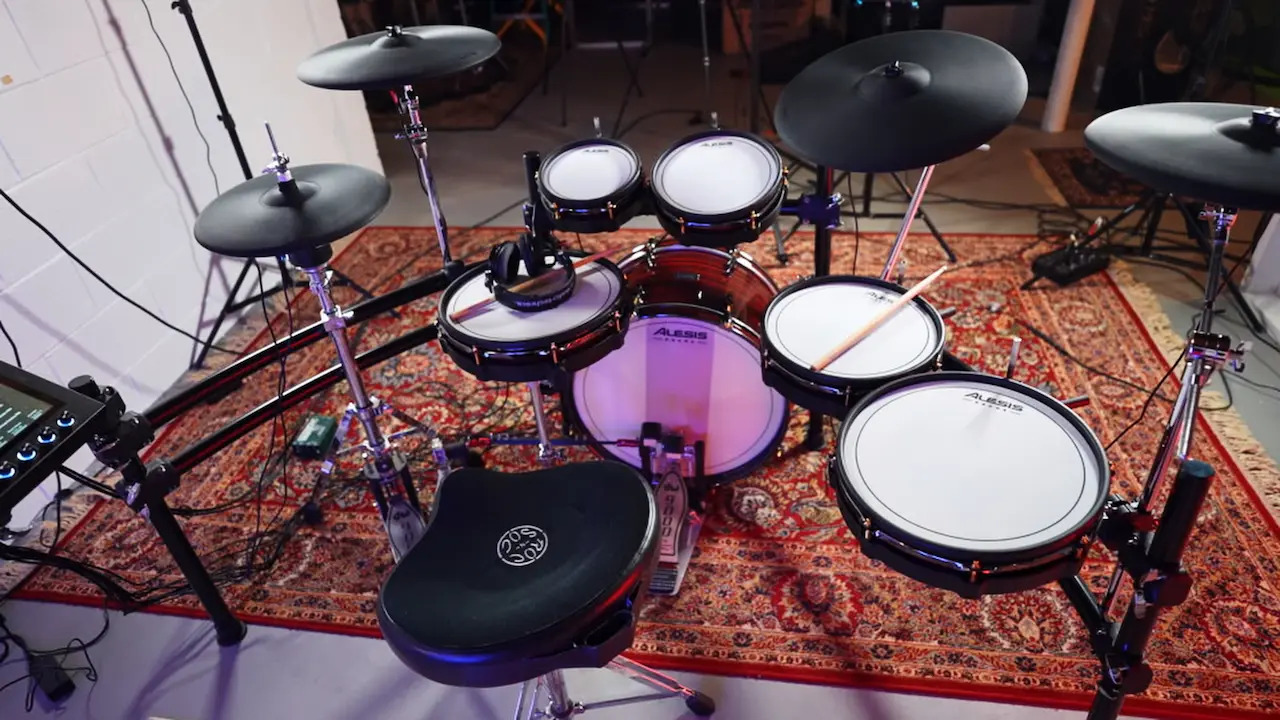
Yamaha has yet to announce a new flagship kit, but with the recent acquisition of DW, Roland launched the DWe last year, a new e-kit that virtually no drummer can afford—an interesting move, to say the least.
With a void left in the market, Alesis is challenging the big makers with an innovative and relatively affordable flagship electronic drum set that decimates every available top-of-the-line kit—the Strata Prime.
| Specifications | |
|---|---|
| Configuration | 14″ Dual-zone mesh snare, 8” / 10” / 12” / 14” Dual-zone mesh toms, 20” kick drum with mesh head, Two triple-zone 16” crash cymbals and one 18” triple-zone ride, 14” active hi-hat cymbal, Prime drum module with 10.1″ touchscreen display |
| Kits | 75 kits, 440+ kit pieces, 1,000+ sound articulations, 215,000+ individual samples |
| Included Hardware | Four post steel rack with locking clamps |
| Where to Buy | N/A |
| What We Like | + Large 10.1″ touchscreen display + Incredible-sounding kit library + 90-day free subscription to Drumeo |
| What We Don’t Like | + Display has low refresh rate + Bluetooth Audio not functional on day one, module update in the works |
At first glance, you might imagine that the Strata Prime is an upgrade of the Strike Pro SE, which couldn’t be further from the truth. The kit was developed from the ground up, featuring new trigger technology, newly recorded drum samples, and a state-of-the-art drum module boasting a 10.1″ touchscreen display.
The kit has a four-post, dual-braced steel drum rack that’s both sturdy and elegant. All the drum pads are dual-zone and familiar sizes: 14″ snare, 8″, 10″, 12″, 14″ toms, and a 20″ realistic kick drum pad—a must these days for flagship e-kits, it seems. The kit has two 16″ crash cymbals, an 18″ ride, and 14″ hats—all triple-zone.
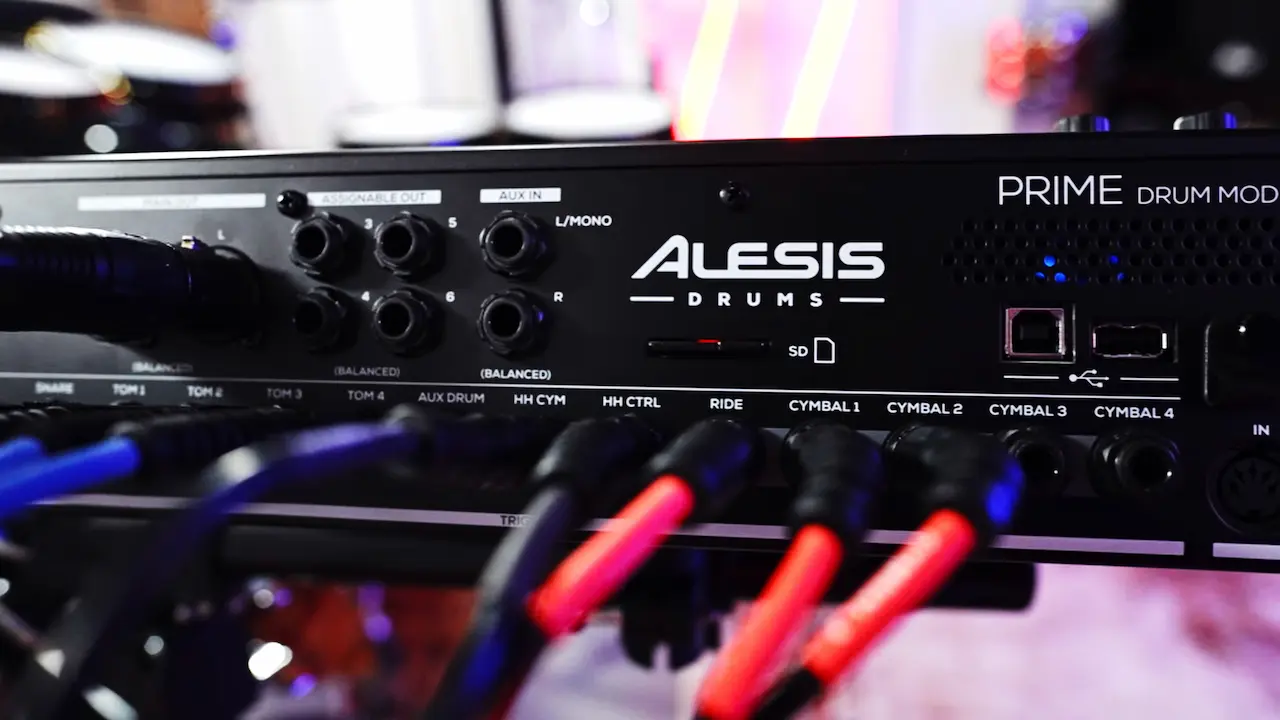
The pads connect via 1/4″ cables to the back of the module—there is no cable snake, like on the Nitro MAX. There are additional inputs for an aux drum and two additional crash cymbals. How they managed single stereo cable connections on the cymbals with three zones is a mystery, but they play incredibly.
So far, it’s similar in size to the Strike Pro SE, but rather than a replacement, the Strata Prime is a complete overhaul.
Unboxing & Assembly
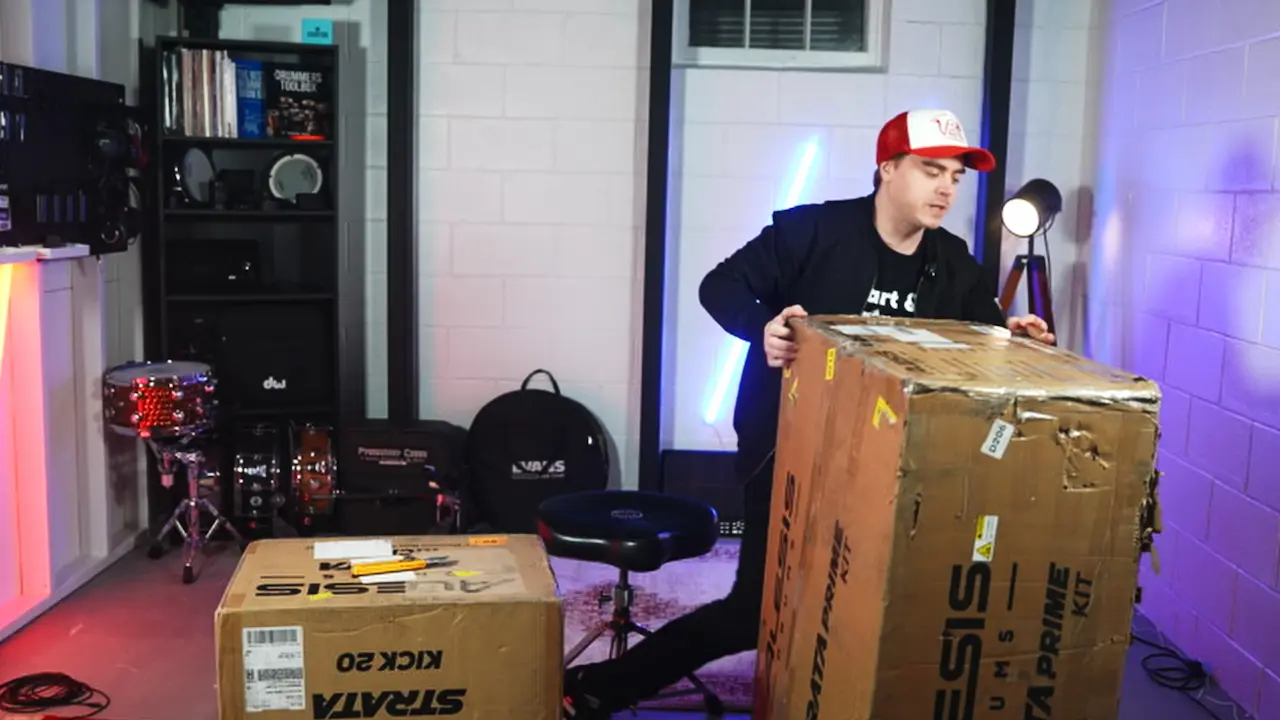
To say this kit is heavy would be an understatement. The drum set ships in two boxes; one has the 20″ kick, and the other box was really fun to slide down my stairs slowly to the drum studio by myself. Make sure you have two people to help you move this one. You may need to open the kit outside or upstairs and move boxes individually.
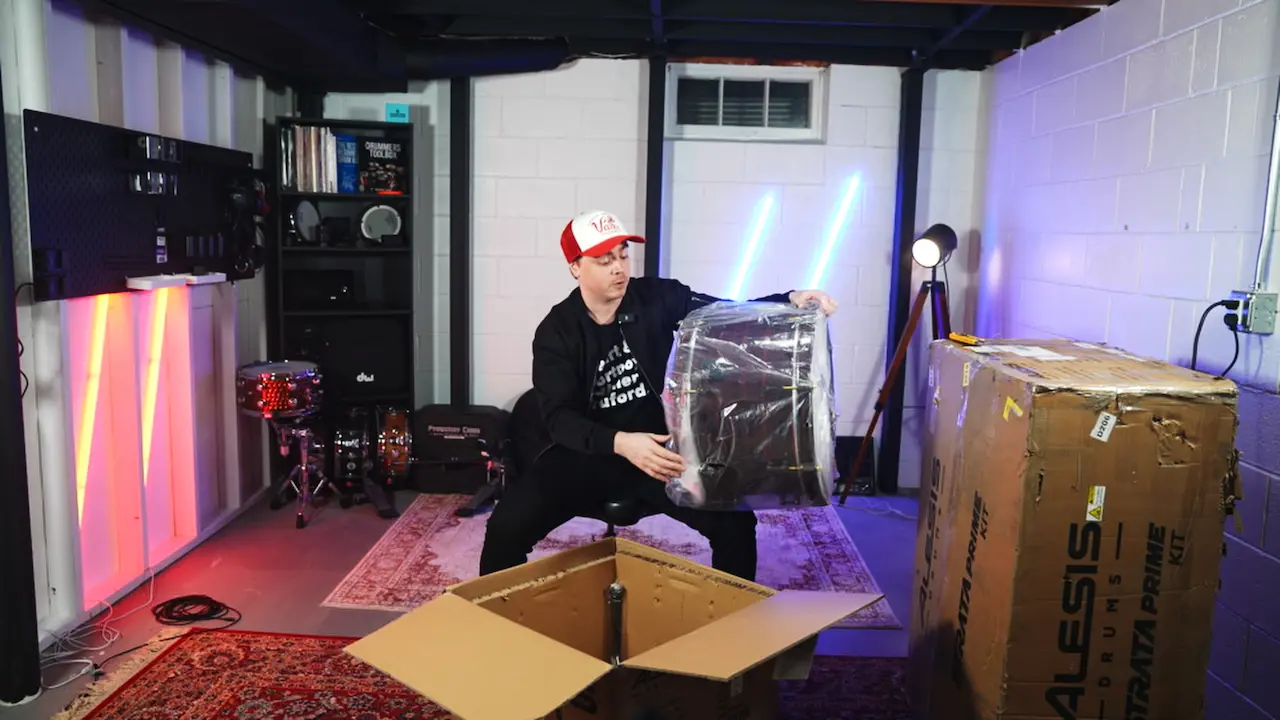
Assembly of the Strata Prime is a bit of a chore. It’s not overly complicated, but you may need a hand if you’ve never set up an electronic drum set before. The hardest part of assembly is putting the rack together. I recommend laying the rack on the floor while building the first section before standing it up on its feet. Assembly took me about 45 minutes from start to powering on the kit.

My Initial Impressions
I can confidently say the Strata Prime is the best electronic drum set release of 2024. I just came upstairs from a four-hour drum session—impressed enough to want to keep playing longer than I should have (it’s almost 3 AM here).
After assembling the kit, I turned it on and was greeted by the bright and vibrant display of the Strata Prime. I put my headphones on and started playing on the default kit. The wow factor is real with this drum set—the realism is unbelievable, and the recorded kits sound like the drum module equivalent of Superior Drummer 3.

I played along with tons of songs on my Moises.ai playlist. Not a single time did I want better-sounding samples, wish the hi-hat worked better, or feel like the drums weren’t punchy enough to cut through—I just played. I wasn’t thinking about any of that—it was just a perfect experience of me playing to my fullest potential, on an electronic drum set of all things.
When you have an instrument that allows you to focus on what’s truly important, performing, it’s a really great sign and I think Alesis nailed the build, design, drum recordings, and quality with the Strata Prime.
Uncompromised Customization
Not only are the presets fantastic, but the level of control with the kit editor is next-level. For example, take a typical drum recording setup: kick, snare, hi-hat, toms, overheads, and room mics. On most electronic drum sets, there’s no way to control the close mic volume against the rooms and overheads. The Strata Prime allows for tweaking small details and fine-tuning, which is typically reserved only for drum VST software.
But it doesn’t have to be overly complicated, either. With the first rotary encoder, you can also turn down the entire instrument, such as the hi-hat. In most cases, I don’t like a close mic on the hi-hat, so it’s nice to only use the overheads and rooms.

The standout edit feature for me, and many drummers will agree when they try this, is the Attack adjustment. If your kit isn’t punching through the mix enough when playing along to tracks, add attack to your kick, snare, and toms. This setting is a game changer—one adjustment all drum modules need.
When I play electronic drums, I sometimes feel like I need to play hard to hear and feel the attack of the kit. Don’t get me wrong—I’m a hard-hitter, but sometimes, what I’m playing doesn’t translate to electronic drums. Adding this setting makes the Strata Prime explode in your headphones. The drums cut through the mix and make you feel like you’re in the studio playing with your favorite musicians. It’s the most realistic electronic drum set I’ve played. It’s such a fun playing experience, one that will make you excited to practice all the time.
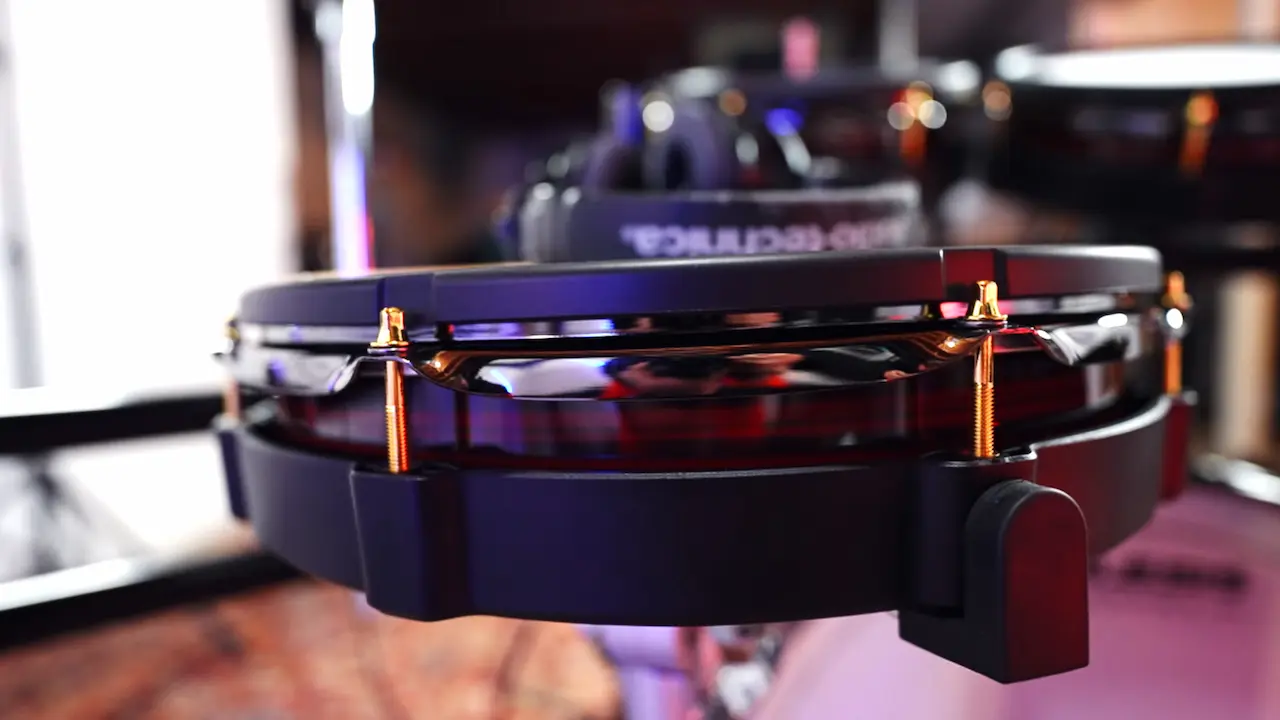
You’re not limited to the manufacturer’s recommended kit layout for the rack either. The Strata Prime is flexible, and you can set your toms and cymbals up in many different ways. One rack tom with two floors and a side snare is a simple clamp swap away.
Kit Presets
I only tried about four of the default kit presets. On each one, there was always an instrument I liked and wanted to keep, so I went sound surfing. I found great snares, killer kicks, and thick Nashville-sounding toms—so many great sounds packed in the module.

I made two go-to kits so far. One is more suited to heavier rock and pop-punk, while the other is better for jazz and fusion. When I’ve tested other electronic drum sets, I don’t think I’ve ever played around with them for four hours on day one of testing—so that’s a really good sign.
From what I understand, there will be expansion packs explicitly made for the Prime drum module. If you’re like me, you’re always on the lookout for more sounds—a big plus in my book.
Ease of Use
Navigating the drum module is intuitive. I didn’t need to read any of the manual to get started, but I do have an extensive knowledge of audio, so familar digital audio workstation functions were easy to understand.
I found myself primarily using the Kit Edit tab and the Mixer page. The Kit Edit tab allows you to change drum samples for individual drums and cymbals, and the mixer tab lets you change volumes for everything from close mics to overheads and rooms to reverbs and buses.
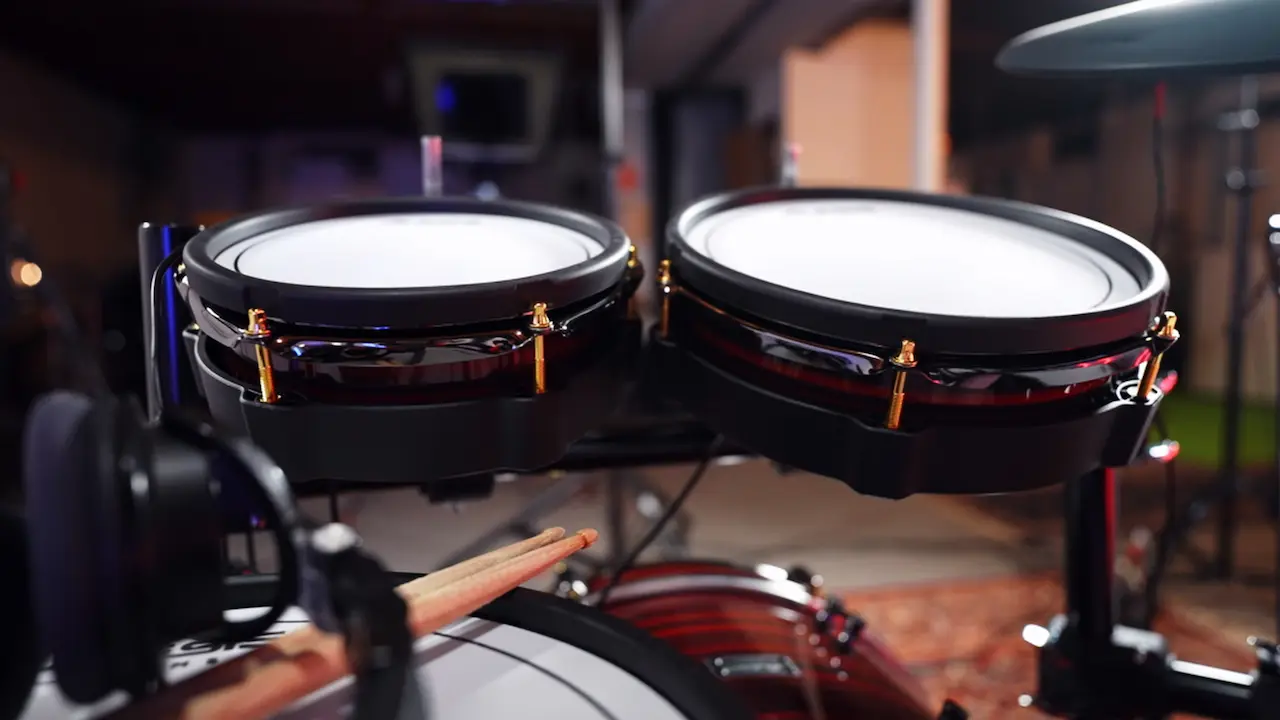
There are tons of settings and customizations. You can compress individual drums and cymbals or the entire drum bus with an insert effect. The level of detail that went into the mixer is unrivaled.
Firmware updates are a breeze and don’t require transferring files to an SD card with a computer—just your WiFi information is needed. Don’t sleep on these; it’s important to keep your kit updated for bug fixes and improvements.
I was looking forward to using the Bluetooth feature with the Prime drum module, but I couldn’t get it to stream audio from my iPhone 14 Pro. I was told the Alesis team is working on an update after launch to bring Bluetooth audio to the Prime module.
Triggering
The triggering on the toms and cymbals is incredible. Delicate hits on cymbals are very realistic, and the toms’ dynamic range is next-level. I was a little disappointed that the hi-hat doesn’t have two cymbals, as we see on higher-end e-kits, but I didn’t think about it once while I was playing.
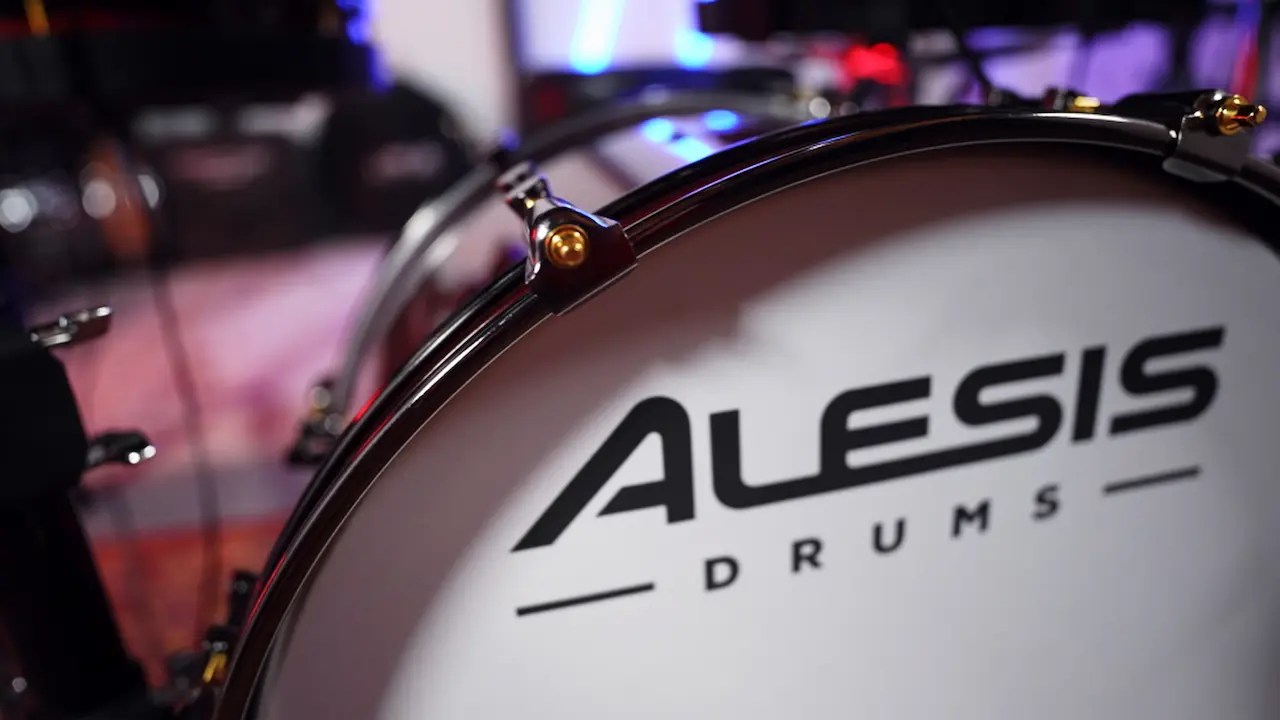
You can choke all the cymbals by grabbing them or using your stick to stop them dead, as you would with acoustic cymbals. It may seem like an odd feature, but you can get real musical by stopping the cymbals with your sticks. There is zero machine-gun effect between sample velocities. The Strata Prime’s realism is undeniable.
Prime Drum Module
This module is massive. The last kit I looked at with a similar module design was the Donner BackBeat, and that touch screen was only 7″, which seemed groundbreaking. The 10.1″ display on the Strata Prime is incredible, and I’m blown away by the design.
Alesis claims the Prime drum module is “the most technologically advanced drum module ever made.” For the time being, they’re correct, only rivaled by the GEWA G9 Pro series module, which looks similar in design (the sounds of the GEWA do not come close). This Prime module will upend the e-drum industry and force all competitors to step up their game if they desire to compete.

The 10.1″ touchscreen makes editing parameters, mixing kits, and navigating presets quick and easy. But being limited to a touchscreen alone would be a bad experience (for me, anyway), so thankfully, Alesis had the foresight to include six rotary encoders for adjusting parameters, along with transport controls and volume knobs.
With the BFD engine under the hood of the Prime module, the kit has high-quality VST-quality drum sounds. On this website, I talk a lot about Superior Drummer 3, as it’s my favorite drum sample engine. The Strata Prime module is like having SD3 built into a drum module.
The touch screen is quick-loading and easy to navigate. The display is bright and vibrant—it’s easy to see what you’re working on. While responsive, the refresh rate of the display is lower compared to what our eyes are used to with the newest Android and iOS displays, so it can feel a bit laggy at times.
Since you’ll control a lot of things with the touch display, Alesis kept the rest of the knobs and buttons on the unit simple. On the top, there are volume knobs for the main outs, aux input, and headphones, followed by transport controls like stop, play, record, activate, click, and tempo. Below is the central encoder knob, which controls various parameters on the screen. Pushing the encoder will make selections. Underneath is the kit button and preset kit plus/minus selectors.

On the bottom, below the touch screen, are six smaller encoder knobs that adjust varying parameters such as volume levels, panning, and more. While testing, I mainly used the bottom six encoders to adjust parameters such as room mix, EQ, overall instrument level, and reverb level.
On the rear side of the module, Alesis still uses 1/4″ connectors rather than a snake input, as we see on smaller modules like the Nitro MAX. There are two additional connections for an AUX DRUM and CYMBAL 4.
There’s a stereo-balanced XLR out for the main out and four additional TRS-balanced outputs. Two 1/4″ TRS inputs allow you to add the sound from your Strike Multipad or any other line-level audio signal to the mix of your kit.
The module uses a USB-B connector for connecting to a computer, so the old printer cable you have lying around will work for using the kit with the BFD Player or other VST drum software (though, you most likely won’t need to, since the sounds are that good). Traditional 5-pin MIDI in/out connectors are available if you still use older hardware.
Drum Rack
The double-braced four post steel drum rack is sturdy. Assembly was a bit of a challenge, but once you get the first three pieces together, it goes smoothly. I ended up needing to push the left side, by the hi-hat, forward more than I would like, so be sure to keep the double braces up higher on the left side to accommodate your hi-hat stand’s legs.
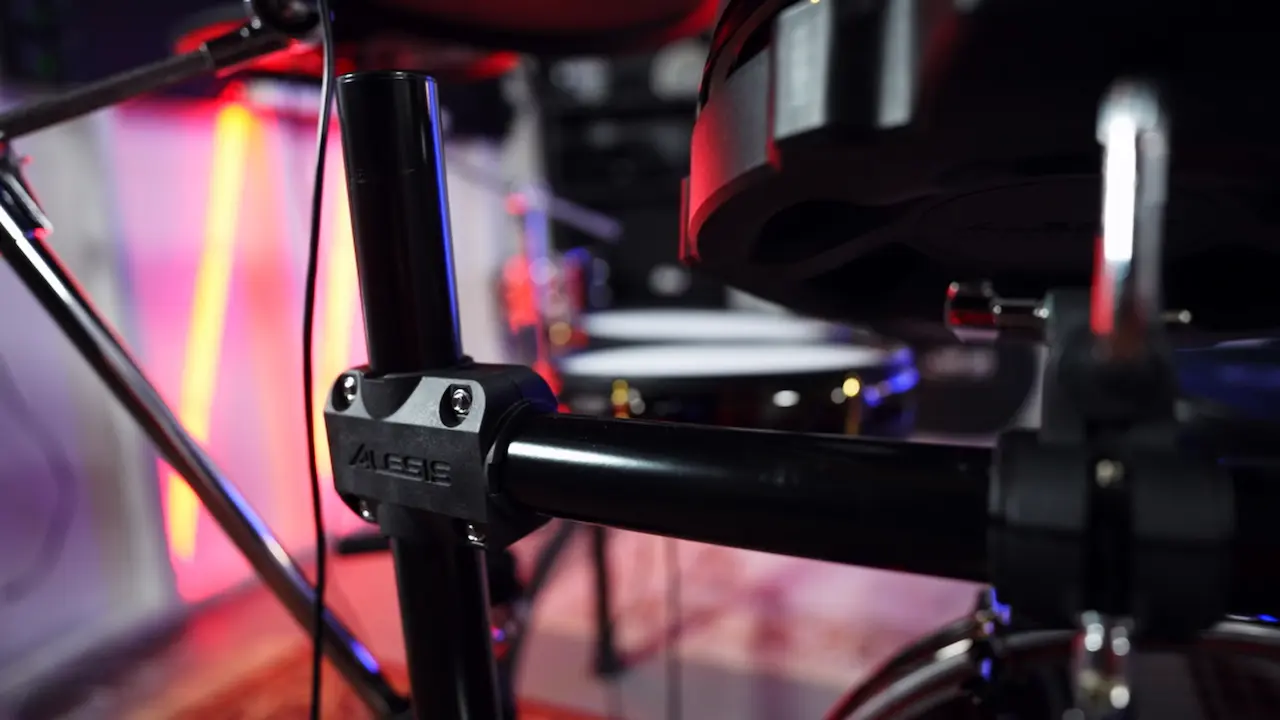
Price
The cost of the Alesis Strata Prime is steep, with the minimum advertised price coming in at $3,499. Given that Alesis hasn’t launched a flagship electronic drum kit since 2019, the price for the new model is reasonable, especially considering recent economic changes and the assumed R&D and manufacturing cost invested. As it stands currently, the Strata Prime decimates every drum kit well out of its price range on the market.
The Roland TD-50KV2 retails around $8,400—well over double the cost of the Strata Prime. The kit utilizes the TD-50X module, which has okay-sounding kits and still employs a small 256×80 dot graphic liquid crystal display (LCD)—tech invented back in 1964.
Roland hasn’t innovated one iota on the quality of their drum sounds either. The TD-50X and TD-27 modules, while newer, cannot compete with the modern sounds of drum VST instruments.
If you count the acquisition of Drum Workshop, the new DWe electronic drum set does have an impressive sound library with DW Soundworks™, but this kit is by far the most expensive e-drum kit available, starting at more than $7,000 if you want the shells and cymbal triggers. The kit requires a laptop computer since there is no drum module—so add another $2,000 to the price if you don’t already have one.
EFNOTE kits, while beautiful-looking, do not have the punch and realistic character the Prime module delivers. Outside of their PRO system, the EFNOTE modules feature a graphic LCD touchscreen. And these drum kits are not cheap by any means. A comparable kit price-wise is the 5X, retailing around $3,799. It has 17 preset kits.
Then there’s the Yamaha DTX10 series. While I have less experience with this series, only getting about a half hour at NAMM to test the kits, they get closer to what an e-drum kit should sound like. Both the mesh and TCS versions of the DTX10 series cost more than $1,000 than the Strata Prime. For kits that expensive, you’d expect bigger playing surfaces, as well (Yamaha’s flagship model only has a 12″ floor tom).
And finally, one that no one talks about—the GEWA G9 Pro series. I am less familiar with their kits, having only spent a short time playing them at PASIC last year, but they didn’t impress me sound-wise. The G9’s 10″ touch display is the closest in similarity to the Strata Prime’s module. The G9 line isn’t cheap. Entry-level kits in the series are almost $5,000.
The Future of Electronic Drums
The trend from many e-drum manufacturers seems to be, “Hey, let’s make the most beautiful-looking drum kit with the best drum shells and forget about innovating on the sounds.”
But why? Do we remember that these are electronic instruments? There’s no point in sourcing the highest-quality materials for a drum shell that never will be played acoustically.
It’s important to look good on stage, but I don’t see a future trend of drummers playing electronic drum sets live (maybe, and it’s a big maybe, in the small upper echelons of the arena world). There will be outliers, but people will continue to play acoustic drums on stage at a far higher rate.
And it’s not that the Strata Prime looks bad by any means—the kit looks incredible. I’m talking about kits like the DWe and GEWA G9 Pro series that seem to have more function aesthetically as an acoustic kit rather than utility as an electronic drum set.
The shells on an electronic drum kit don’t need to be made from handcrafted North American maple or exotic Bubinga. Innovation beats out luxury when it comes to quality of sounds and triggering technology.
Alesis offers drummers the best of both worlds with the Strata Prime—high-quality studio-level drum sounds and a great-looking, fun-to-play, massive e-kit that feels ergonomically like an acoustic drum set. I am confident in my prediction that the Alesis Strata Prime will be the best electronic drum kit released in 2024.
Read more info about the Strata Prime on the Alesis website.
